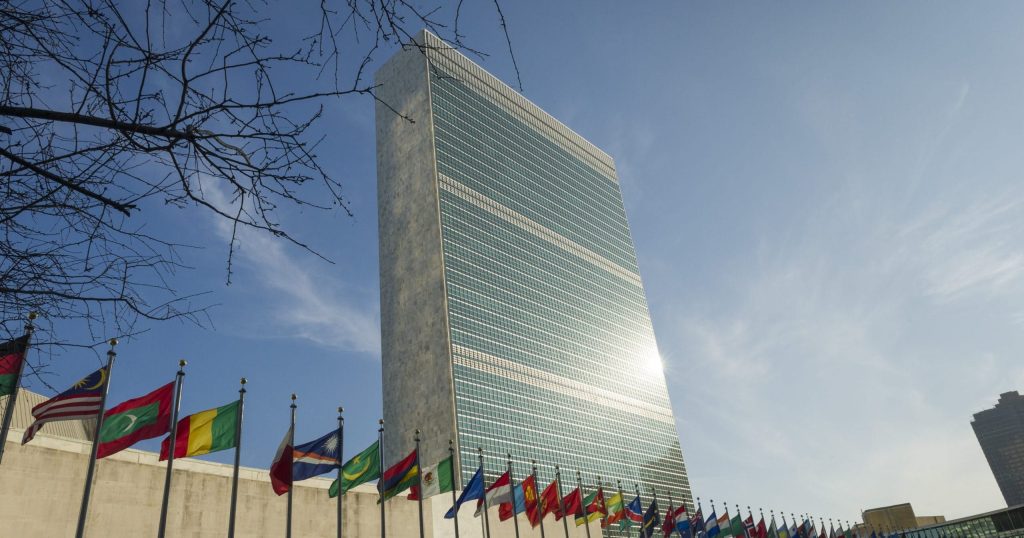Today marks World Food Day – a day established by the United Nations to focus the world’s attention on hunger and food security.
To get up to speed on where we are in the fight against hunger and how we can increase progress, the UN Foundation recently spoke to Zak Bleicher, a Partnership Officer in the UN’s International Fund for Agricultural Development.
Jenni Lee: What is the state of hunger in the world?
Zak Bleicher: The state of hunger is improving, but we have a long way to go. According to The State of Food Insecurity in the World report, about 26 million more people are getting sufficient food to meet their dietary needs in the period 2011-2013 than when we last reported for 2010-2012.
A total of 842 million people, or around 1 in 8 people in the world, are estimated to be suffering from chronic hunger, which means they’re not getting enough food to conduct an active life. This is an improvement, but obviously 1 in 8 people in the world is not a satisfactory situation.
JL: What is the International Fund for Agricultural Development, and how do you work to address hunger and poverty?
ZB: The International Fund for Agricultural Development (IFAD) is a unique institution in the multilateral system: It’s both a specialized agency of the UN and an international financial institution.
IFAD’s overarching mission is to eradicate extreme poverty and hunger in rural areas in developing countries. We do this primarily through low-interest loans and grants to developing countries for rural development projects. We try to orient our work around creating the conditions for poor rural women and men to lift themselves and their families out of poverty and hunger. IFAD has helped more than 400 million poor rural people realize this potential.
Today we support 253 projects in 96 countries worth more than US$12 billion. These projects are designed to enable poor rural people to grow and sell more food, increase their income, strengthen their food security, and improve their livelihoods. The idea is to address the root causes of poverty and hunger and help people to create for themselves the lives they want – this is the kind of return on our investment that we seek.
JL: What are some of the challenges in addressing hunger?
ZB: Food prices are higher and more volatile than ever. The world’s population is heading toward 9 billion people. Climate change, higher temperatures, long draughts, and excessive flooding are increasing in their regularity and impact, having a profound impact on the agricultural sector. Agriculture is inherently a risky business, and the climate-associated risks are increasing.
Hunger is also closely linked to poverty. There are 1.2 billion extremely poor people in the world, and about 70 percent of them live in rural areas. These people are often dependent on agriculture for their lives and livelihoods, and too often remain hungry. That’s due to a range of factors depending on the context in which they live, but often include poor infrastructure, lack of access to markets, lack of quality inputs, and instability in the country.
We’re seeking to invest in transformational change in rural areas where overcoming hunger and poverty is often a complex challenge.
JL: What are some of the solutions and opportunities to alleviate hunger?
ZB: We need to invest in rural development more and that can actually solve both of the hunger and poverty challenges. Investment in agriculture, particularly smallholder agriculture, is an extremely efficient and effective investment. In sub-Saharan Africa, it’s shown to be five times more effective than investment in other sectors when it comes to the reduction of poverty.
Through sustained and smart investments, accompanied by the right kind of enabling environment, we can efficiently address both challenges at the same time to create more vibrant and dynamic economies.
Something that is promising is that we are mobilizing over $5 additional dollars in co-financing from other partners for every dollar that we invest, which means there is a tremendous opportunity to scale up the work we’re doing. And increasingly the countries where we’re investing are increasing their own investments alongside the loans they are taking, which further reflects their own commitment to invest in rural development.
JL: Are you hopeful that we can end hunger and poverty in the world?
ZB: Of course, I couldn’t do this work if I wasn’t hopeful about it. It’s a steady progress that we’ve made, but not fast enough. It’s tragic that this many people in the world today go to bed hungry every night.
I’m lucky enough to work for an institution full of people who are committed to changing that. This isn’t about charity; it’s about justice and transforming people’s lives. Overall, I think reasonable people sometimes disagree on the means and methods to get there, but I think we all agree on that objective, and that to me is very hopeful
Editor’s Note: Reducing poverty and hunger are key elements of the Millennium Development Goals. To get involved in these important issues, visit un.org/millenniumgoals
You can also help raise awareness on social media!

